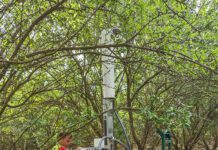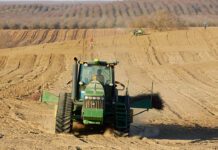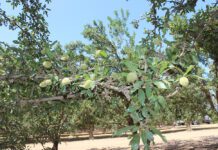The following measures have been mandated by the U.S. Environmental Protection Agency (EPA) when using paraquat products.
- Label changes emphasizing paraquat toxicity, restrictions and safe handling
- Supplemental warning materials
- A paraquat-specific certification requirement, in addition to the state-required certification to apply restricted use products
- Restricting use of all paraquat products to certified applicators only
- Closed-system packaging for all non-bulk (less than 120 gallons) end-use product containers
Two certifications will now be necessary to use paraquat products sold with the new label. The first is a certified pesticide applicator’s license from the state and the second is a paraquat-specific training certificate in the individual’s name. In the case of a commercial application, all persons involved in both the pre-application process of mixing, loading, etc. will be required to obtain the certificate even if they are working under the supervision of certified applicators. “Use” includes pre-application activities involving mixing and loading paraquat. Use also includes applying paraquat, trans- porting or storing opened containers, cleaning equipment, and disposing of excess product, spray mix, equipment wash waters, empty pesticide containers and other paraquat-containing materials.
The requirement that all persons involved in the commercial pre-application and application of paraquat process is expected to be one of the biggest changes according to Jodi Devaurs, director of regulatory affairs for Western Ag Processors Association.
Previously, in a commercial application, as long as a supervisor had the Qualified Applicators License or Certificate, the certification was not required for all persons working at the site. Non-certified applicators will not be allowed to use paraquat products even if under the supervision of certified applicators.
Study guides and exams to obtain the certification are offered through Department of Pesticide Regulation (DPR).
The label changing required by November 14 includes new warning boxes in both English and Spanish and a revised restricted use statement. It also requires users have paraquat specific training in addition to the state required certification to apply the product. The containers will also need to include on the label supplemental warnings including stickers and ‘counter’ cards that highlight the toxicity information.
There will be additional changes for packaging that will require paraquat products be sold in a closed system. These changes will go into effect in the fall of 2020.
Devaurs said the new requirements are not just for California, this is a nationwide change, but each state will vary in its specific rules.











